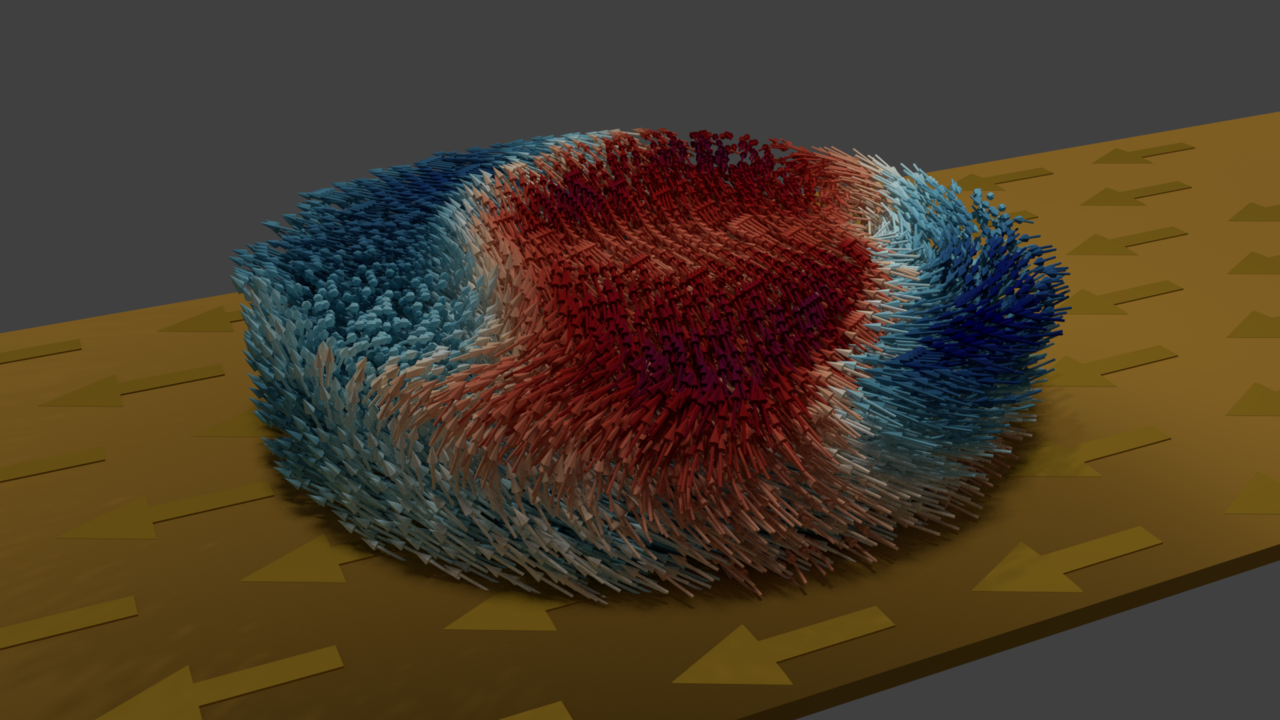When one thinks of a magnet, we often imagine a red and blue bar magnet, designed to produce strong magnetic fields. Such magnets are widely used in and for our daily lives, from magnetic boards in the kitchen, to electricity production. But it’s not only strong, permanent magnets that are useful: highly inductive materials whose magnetic state changes significantly when exposed to external fields are used as sensors, whilst patterned nanomagnets and thin films are used for data storage, and have been proposed for future forms of computer memories and logic devices. Indeed, recently there is growing interest in moving such systems to three-dimensions, with first theoretical works predicting extremely fast motion of magnetic features, as well as chiral effects.
What is it that makes measuring magnets so different from other materials? Well, it is the vectorial nature of the magnetisation – and the fact that it is free – or not! – to point in different directions and form complex patterns in 3D space, due to the presence of long-range interactions, that makes it so powerful. Hence, understanding and visualising the behaviour of a magnetic material in three-dimensions is a complicated business. Not only is it important to know what patterns and structures the magnetisation forms, but it’s essential to understand how it reacts to external stimuli. As you can imagine, these responses are interesting from a fundamental point of view, and they are crucial when it comes to magnetic devices used in technology and applications!
One of the main challenges in investigating the response of a magnet is tied to the very reason magnetic materials are so relevant for applications: changes in the magnetisation typically are extremely small, and happen extremely fast. In fact, magnetic configurations can exhibit features on the order of tens to hundreds of nanometres, thousands of times smaller than the width of a human hair, and typically react to magnetic fields and currents in nanoseconds: that’s billionths of a second! As a result, to truly understand the response of a 3D magnet, sophisticated techniques are required.
In our paper published today in Nature Nanotechnology, we visualise the evolution of the magnetisation in response to a quickly alternating (500 MHz) magnetic field, in three dimensions, at the nanoscale. This is achieved using time-resolved magnetic laminography, a new technique we developed that makes use of the high spatial and temporal resolution provided by synchrotron X-rays to probe the magnetic state from many different directions. The resulting seven-dimensional dataset (three dimensions for the position, three for the direction of the magnetisation and one for the time) is then obtained using a specially developed reconstruction algorithm, providing a map of the magnetisation dynamics with 70 picosecond temporal resolution, and 50 nanometre spatial resolution.
In this first measurement of the dynamics of a magnet in 3D, we observe a variety of behaviours: including the oscillation of magnetic vortices – which move back and forth at over 200 m/s – and the precession of the magnetisation, which is enhanced in particular regions within the sample. These complex dynamics are closely related to the magnetic state, providing insight into different types of magnetisation dynamics that can occur in 3D, and how they can potentially be controlled. For more information, see our recent paper Time-resolved imaging of three-dimensional nanoscale magnetization dynamics, or feel free to get in touch to find out how you could make use of this technique for your own 3D magnetic systems!

Figure 1. (left) a rendering of a snapshot of the reconstructed 3D magnetic structure. (right) maps of regions of strong magnetisation dynamics at 500 MHz, which can be seen to spiral around the edge of the structure (top right), corresponding to so-called edge modes, and are located within the cores of the vortices (lower right), corresponding to the oscillating motion of the vortex domain walls.





Please sign in or register for FREE
If you are a registered user on Research Communities by Springer Nature, please sign in